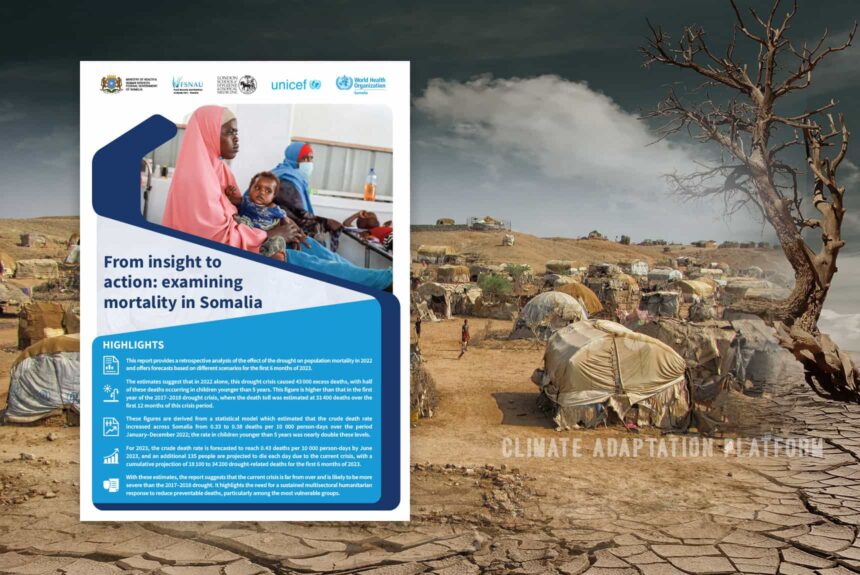The deepening droughts in Somalia killed an extra 43,000 in 2022, compared with the 2017 and 2018 drought crises.
Half of these deaths are thought to be children under five years old. This is a finding from a new report released by the Federal Ministry of Health & Human Services, WHO, and UNICEF on 20 March 2023.
A scenario-based forecast model developed to improve anticipatory actions and mitigate drought predicts that death rates in 2023 will only increase. The model forecast that from January to June 2023, 135 people can die daily, with 18,100 and 34,000 estimated deaths due to famine.
In the video below, Matthieu Favas, The Economist Finance correspondent, explains that a combination of shocks has worsened Somalia’s food crises this year. He says that the world is in an “unchartered territory” as the food crisis is not only caused by multiple causes, but it is coming on top of an energy crisis and a fertiliser crisis.
According to The Economist, the present hunger in Somalia is the deadliest since the famine of 2010-2011, which claimed 260,000 lives. The country’s drought is also the worst in the region for four decades, stretching beyond Somalia to other parts of Africa, such as Kenya and Ethiopia, where millions of people go hungry.
The dry spells in the Horn of Africa that have brought severe food insecurity in the region are linked to La Niña, a temporary cooling in the Pacific Ocean that affects weather patterns worldwide. The article says its impact may have been amplified by climate change.
Like other developing countries, Somalia’s contributed little to the climate crisis regarding their emissions – insignificant compared to the United States, for example. Yet, they are suffering the brunt of the climate change effects.
The Economist pointed to the factors that made the 2022 famine much worse –Russia’s invasion of Ukraine, which curtained Somalia’s wheat supply – the country imports 90% of its wheat from Ukraine. In addition, soaring food and fuel prices, combined with the Covid-10 impacts, have stretched the budgets of households and aid agencies and, in some cases, delayed critical humanitarian response.
Another problem is the presence of militant Islamist groups in Africa. The Al-Shabab, an al-Qaeda affiliate, controls much of the country’s countryside. The article says that jihadists are entrenched in locations where hunger is most severe, and, in the past, they would demand protection money to allow aid through. This could increase food prices while aid workers fears being killed or kidnapped in these areas.
While releasing the report’s findings, Minister of Health of the Federal Government of Somalia, Dr Ali Hadji Adam Abubakar, expressed concern that prolonged hunger will make deaths and diseases thrive and affect the vulnerable and marginalised groups the most. He also urged their partners and donors for their continuous support.
Read the report summary: From insight to action: examining mortality in Somalia
The Economist video below explains the global food crisis.
Sources
New study finds that 43,000 “excess deaths” may have occurred in 2022 from the drought in Somalia. (2023 March 20). United Nations Somalia. Retrieved from https://somalia.un.org/en/224951-new-study-finds-43000-%E2%80%9Cexcess-deaths%E2%80%9D-may-have-occurred-2022-drought-somalia
Drought killed 43,000 people in Somalia last year. (2023, March 25). The Economist. Retrieved from https://www.economist.com/middle-east-and-africa/2023/03/25/drought-killed-43000-people-in-somalia-last-year



Leave a Reply